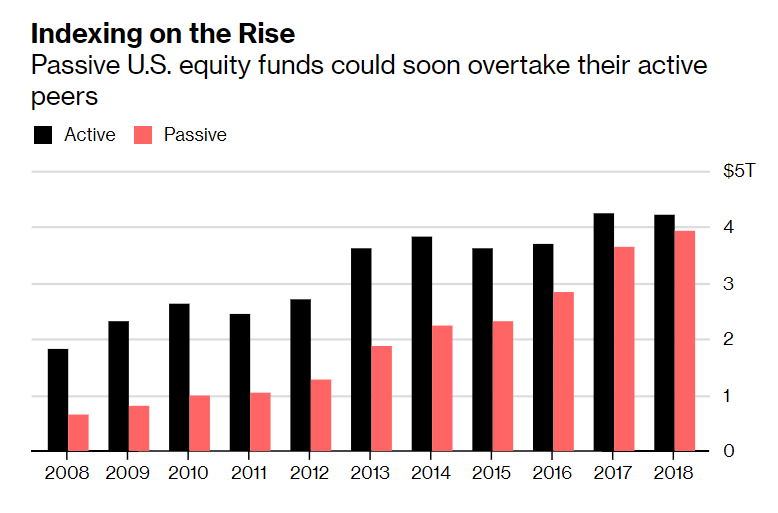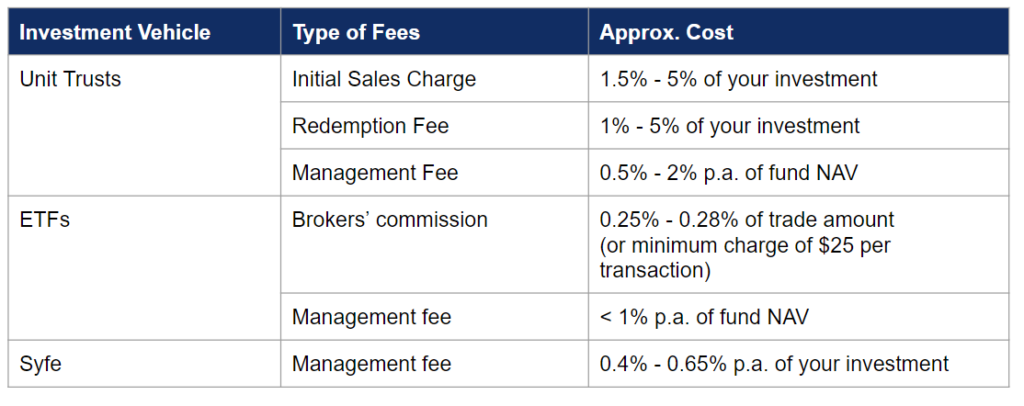
We are in the midst of a passive investing revolution. It has helped regular investors save billions of dollars in costly fund management fees. It has made building a diversified portfolio as simple as a few clicks of the mouse. Best of all, it has allowed investors to receive fair market returns by doing almost nothing.
Passive and active investing, explained
The easiest way to understand passive investing is to know what active investing means. An active investing strategy operates on the idea that by picking the right stocks or timing the market, investors can outsmart the market and earn outsized returns.
Few investors are that confident of their stock picking skills. So they turn to active fund managers to do it for them. While skilled fund managers may be able to choose the right stocks and beat the market in any given year, replicating that feat year after year is hard. And while there is no way fund managers can consistently know which stocks will do well, they charge a premium for their supposed stock picking prowess.

Passive investing aims to correct this imbalance. Instead of paying large amounts of money to fund managers who claim they can pick the right stocks, passive investors simply pay a low fee to buy a broadly diversified basket of stocks that mimics a market index such as the Standard & Poor’s 500 index (S&P 500).
The passive investing momentum has picked up in the last few years. Investors have flocked to passive investments like index funds and exchange-traded funds (ETFs) to invest at far lower fees. Passively managed US equity funds increased their market share to 48.1% in 2018, a dramatic increase from 24% in 2010 and just 12% in 2000.
Choosing the right investment approach
There are many sides to the active vs. passive investing debate. To help you make the right investment choice, we have laid out the key points for and against both approaches below.
Performance
With an active strategy, there’s a chance you can potentially outperform the market if you are able to find some undervalued stocks and make the trade at the right time. But while active funds may possibly perform better than passive funds in the short term, very few active funds manage to do so consistently over the long haul.
Studies have shown over and over again that actively managed funds almost always underperform passive investments in the long run. One such study by S&P Dow Jones Indices showed that about 90% of active fund managers failed to beat their index targets over the previous one, five and 10 years.
With a passive strategy, an investor gets market returns because instead of owning selected “good” stocks, he owns all the stocks in the market through index funds or ETFs. If he invests in an ETF that tracks the S&P 500, he has invested in all 500 stocks the index is composed of. Correspondingly, his return will be very similar to the S&P 500, which has generated 6% – 8% annualised returns over the past decades, even after accounting for inflation.
Cost
The low cost of ETFs and index funds is a key driver behind passive investing’s popularity. Investors are wising up to the fact that paying less in fees translates to higher returns for them.

In fact, much of active funds’ under-performance stems from their high fees. Active managers spend more money on manpower, technology and time to analyse and research attractive stocks. Moving in and out of stocks also racks up high trading costs. Let’s say the S&P 500 index turned in a return of 8% that year and the active fund has 3% in annual costs. To outperform the index, the fund manager would need to have picked a portfolio that generated more than 11% in returns. That’s quite a tall order for any fund to achieve consistently year after year!
The high cost of active retail funds in Singapore
In Singapore, unit trusts (also known as mutual funds) are a common active investment option offered by banks and insurance companies. They pool money from different investors and engage professional fund managers to invest the funds.
Compared to ETFs, investors pay more fees when they invest in unit trusts, ranging from initial sales charges, redemption fees to fund management fees. To gauge how costly these funds are, check the fund’s total expense ratio (TER), which reflects its operating costs as a proportion of net assets. For comparison, the Straits Times Index ETF (STI ETF) has a TER of 0.3% while the Aberdeen Standard Singapore Equity fund, which also benchmarks the STI, has a TER of 1.64% (as at May 2019).
Another low-cost passive investing option would be to invest with a digital wealth manager like Syfe. Syfe charges a low management fee ranging from 0.4% to 0.65% per annum, a fee which already includes brokerage charges. With Syfe, you gain a broadly diversified investment portfolio comprising equity, bond and commodity ETFs. This also saves you the hassle and fees associated with buying different ETFs to build your own portfolio.
Ease of investing
With passive investing, you simply need the patience to stay invested for the long haul. Passive investing delivers returns over the long term, so you need to be prepared to hold on to your investment for a long period of time. This is ideal if your investment goal is to build wealth for your retirement for instance.
Active investing on the other hand requires time and effort to research companies and market conditions. For the average do-it-yourself investor with family and work commitments, do you really want to be spending your precious free time researching and picking stocks?
How to start passive investing
Passive investing is ideal for investors who don’t relish the idea of spending hours on manual portfolio management and yet want a better return on their investments. To get started on your own passive investing journey, click here to view which diversified ETF portfolio best suits your investment goals and risk profile.







You must be logged in to post a comment.